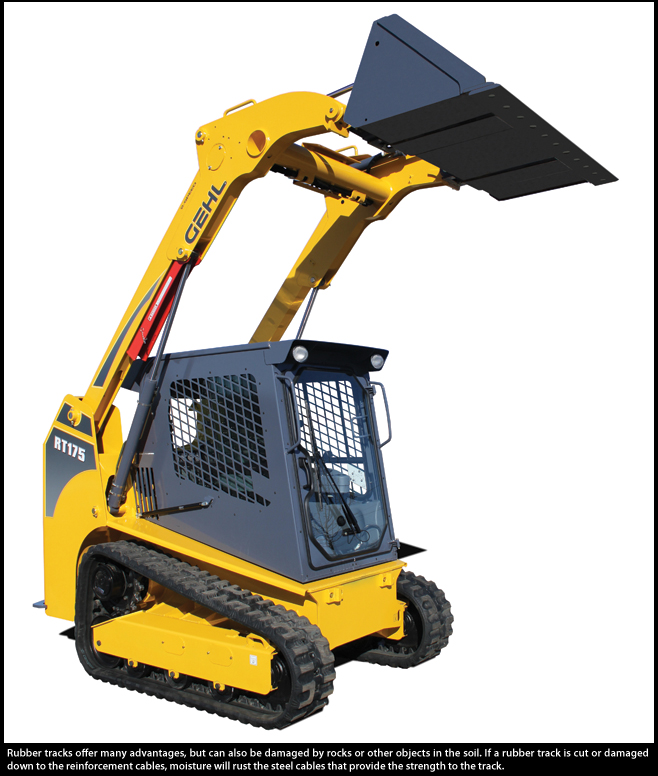Track Loader Support

A compact track loader is one of the most versatile and useful tools within a contractor’s equipment fleet, providing improved capability over soft terrain and increased capacity compared to skid steer loaders. However, the very items that make them unique and so useful also require some special care to ensure reliable service and uptime.
Maintaining the operators area is not that much different than on other pieces of equipment except that when track loaders are operated on hard surfaces, vibration of the cab and components is more intense. New track loader designs have taken steps to provide a smoother ride. Over time, intense vibration can lead to more maintenance depending on specific applications and operating conditions (like operation in soft soils vs. operation with a cold planner on concrete). With this in mind, an operator should pay special attention to hardware to ensure that all components stay securely in place. Cab mounts, seals and hardware should be checked on a regular basis. Loose components and hardware should be tightened, and damaged components should be replaced.
Track loaders are generally operated in dirty or soft ground conditions. Operators entering the cab tend to bring in a lot of soil and mud on their boots. As with most other products, the operator’s area needs to be cleaned on a regular basis. If the floor pod does not tip forward for easy clean-out, a shop vacuum should be used to ensure debris is removed. This is particularly important if the unit is equipped with an enclosed cab and air conditioning or heat. If the cab is equipped with a re-circulating air filter and a cab fresh air filter, they should be serviced on a regular basis. Keeping the air conditioner clean will ensure its long-term reliability.
The operator’s manual supplied with the product provides critical safety information and instructions on normal engine and hydraulic system oil and filter change intervals. Track loaders operate in fairly difficult conditions; spending a few extra dollars for regular oil sample testing will maximize your change intervals and help to ensure you are changing your oil and filters adequately. Oil sampling will also provide short- and long-term indicators of unusual wear or failures that are in progress to help eliminate downtime during critical periods.

Since track loaders are uniquely qualified to operate in harsh soil conditions, it is also important to check the chassis. Be sure all covers, doors, belly pans and shields are in place, in good condition and securely fastened. Manufacturers recommend the chassis be kept clear of debris, and in most cases, cleaned daily. This is required to prevent catastrophic failures due to accumulation of foreign material or overheating due to plugged radiators. The heart and soul of a compact track loader is its undercarriage and track system. Proper operation and maintenance will either lead to greater productivity or downtime and high operating expense. Proper operation and maintenance is not difficult, but does require following recommendations in your operator’s manual.
Track tension is very important to extend the life of tracks and the rolling elements of the undercarriage. In fact, improper track maintenance may be the single largest contributor of premature wear and failure of tracks and components, especially if tracks are over-tightened to delay normal adjustments. Over-tightening the tracks also robs horsepower and increases the likelihood of damage to tracks during machine operation. Don’t forget to inspect the track on a regular basis.
Overall, track loaders offer many operating advantages over wheeled loaders depending on soil conditions and allowing improved productivity. In fact, track loaders remain productive when select soil conditions make wheeled machines useless. But as with any machine, they must be maintained properly. A little extra time spent on them each day before they are operated will increase their productivity and ensure they are operating when they should be.




